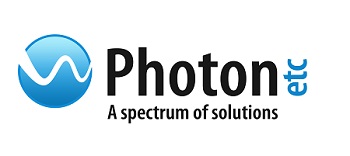The Biosimulation and Imaging platform for new Central Nervous System drugs (BICNSD) is a 3 year project for the validation and development of a unique service based on biosimulation and imaging using two synergistic platforms. This will boost drug development and discovery through tracking drug candidates’ actions at molecular and subcellular levels and having a greater understanding of Central Nervous System (CNS) diseases.
.jpg)
Figure 1. Composition of a synapse
The multiplex cellular fluorescence imaging platform will be developed by Photon etc with the collaboration of Professor Paul de Koninck of the Neurophotonics Centre of Université Laval in Québec, while Rhenovia Pharma will carry out the biosimulation of drug delivery in the central nervous system.
This project is aimed at the development of new processes and technologies that will have the power to facilitate the discovery or the development of new drugs. It is funded by the Québec Consortium for Drug Discovery (CQDM), Alsace-Biovalley and OSÉO and is an international France-Québec collaboration.
Project
Background: Due to a lack of proper methods for investigating complex molecular processes down to a small scale (i.e. the synapse), fundamental mechanisms underlying diseases of the Central Nervous System (CNS) remain ill-defined.
This restriction explains in part the corresponding poor efficacy of existing treatments and our struggle to find innovative treatments for CNS diseases in the past decade. There is therefore, a need, for new tools to assess the dynamics of proteins along the neuronal membrane, following different stimulations or drug treatments.
Objectives: The project concerns the development of a drug discovery & development platform for CNS disease based on:
- A cellular and subcellular imaging system able to image several labels simultaneously
- The design of probes for multi-labeling of receptors in neurons
- The imaging analysis software tools for label visualization
- A biosimulation platform implementing and integrating signaling cascades, specific protein-protein interactions, and receptor movement along the postsynaptic membrane.
Preliminary Results
1. Biosimulation Platform (Rhenovia)
Synapses are structures in the nervous system that allow neurons to pass chemical or electrical signals to each other and are made up of three elements:
- the presynaptic terminal, which releases neurotransmitter after an action potential in the input neuron;
- the synaptic cleft in which the neurotransmitter is released;
- the target neurons postsynaptic element. The neurotransmitter initiates receptors which change the chemical signal into biochemical and electrical signals through the activation of intracellular secondary messenger pathways and ion channels.
Individual properties of neurotransmitter receptors strongly influence their activation profile. Some of these properties are the affinity for their kinetic and ligand characteristics (desensitization, activation, deactivation). Additionally, the location within the synapse, i.e. close (synaptic) or far (extra synaptic) from the release site will also impact the response.
The first step was to study protein-protein dynamics and interactions of intracellular proteins of interest regarding signaling pathway (Stargazin, CaMKII) as well as glutamate receptors AMPA, NMDA and metaboprobic glutamate receptors (mGluR) and their subtype of receptors (NR1/NR2A and NR1/NR2B NMDAR, GluA1 and GluA2 AMPAR, mGluR5).
A literature review was done to ascertain if these receptors migrated as effect of drug treatment or under specific pathological conditions. NR1/NR2B Models of receptors were generated, compared to literature, validated and implemented in the glutamatergic synapse following certain characteristics.
In the future, the aim is to define the remaining glutamate receptors of interest. Computational environment will be established by characteristics identified by the Photon etc cameras and the focus will be extended on dendritic branches on which 10-15 excitatory synapses will be attached to.
2. Multiplex Cellular Imaging Platform
In the past, tissue imaging and cellular imaging have been restricted by the number of label, or stains, that that could be utilized to image and examine many molecular species or tissue type concurrently. These limits can be removed by Photon etc.'s technology.
By utilizing novel narrow band labels like SERS nanospheres, quantum dots, or other Raman labels, the spectral imager permits multiplexing tens of labels, consequently monitoring and imaging tens of signal at the same time. This can give much more comprehensive in vitro studies when examining the results of new drug candidates on cellular signalization cascades.
3. Multi-Labeling of Receptors in Neurons (Paul De Koninck Lab)
See figure 2. Precise labeling of post-synaptic sites on living neurons and labeling of two kinds of synaptic receptors, NMDA and AMPA, with different antibody-quantum dot combinations was attained.
.jpg)
Figure 2. Labeling of post-synaptic sites on living neurons
The design of the prototype with fluorescence cellular imaging capabilities is finished and the system is currently being manufactured. It consists of Photon etc.’s hyperspectral imager accompanied by the HNü 512 EMCCD camera from Nüvü Cameras and an IX-73 Olympus microscope. Illumination is supplied by a 300 W xenon lamp (Sutter Instruments) combined with optical filters (Semrock).
The microscope possesses motorized focus and mirror turret to allow automatic selection of illumination wavelength and z-stack acquisitions. The filter is made for fast collection of hyperspectral data in the wavelength range 500 to 900 nm with a 2 nm bandwidth.
The system is anticipated to allow spectrally resolved fluorescence images to be acquired within a few seconds.

This information has been sourced, reviewed and adapted from materials provided by Photon etc.
For more information on this source, please visit Photon etc.